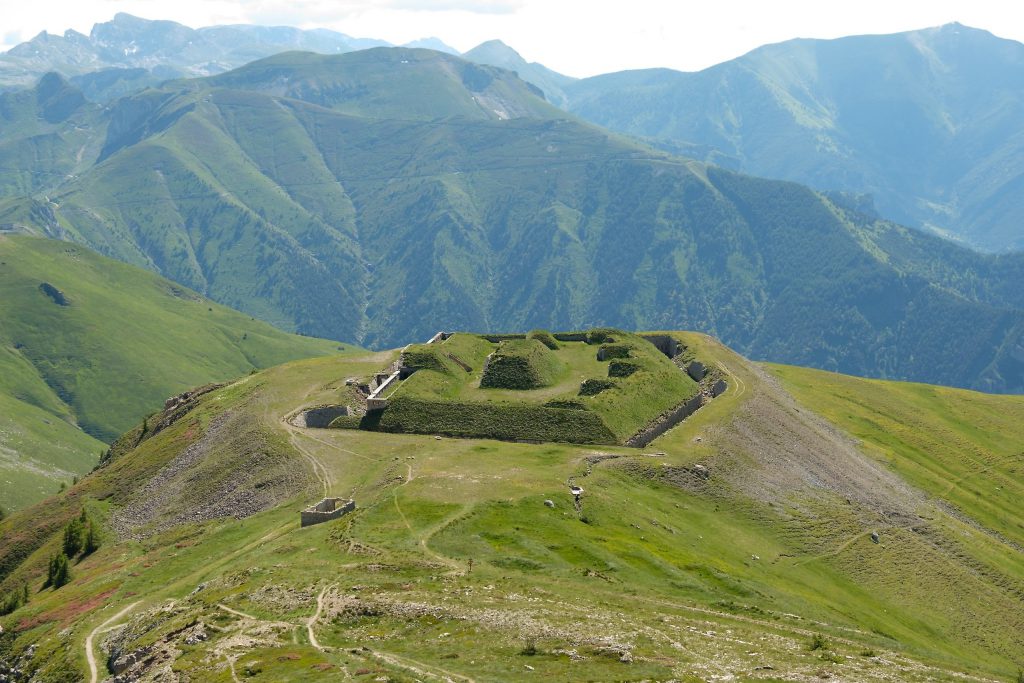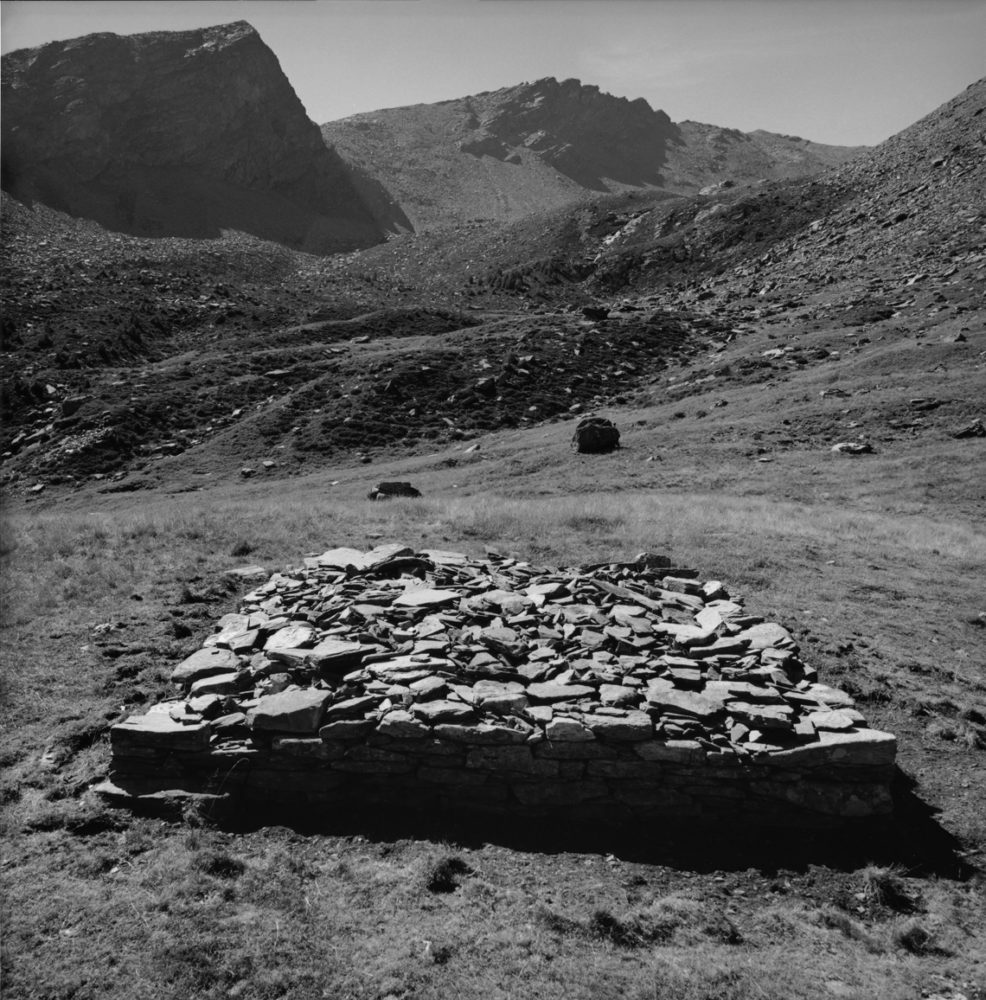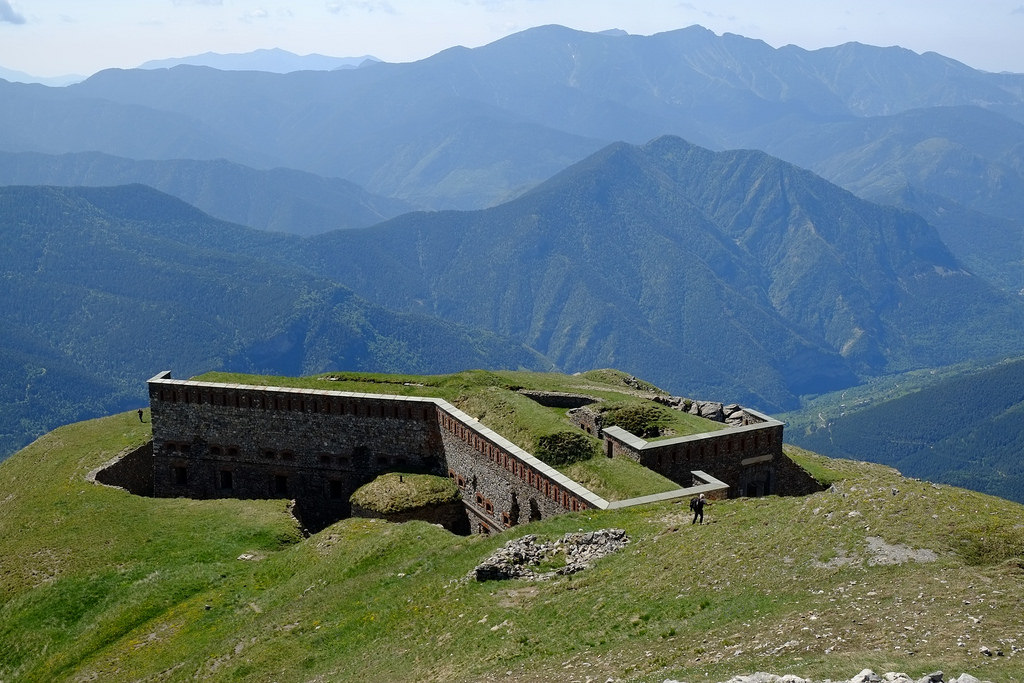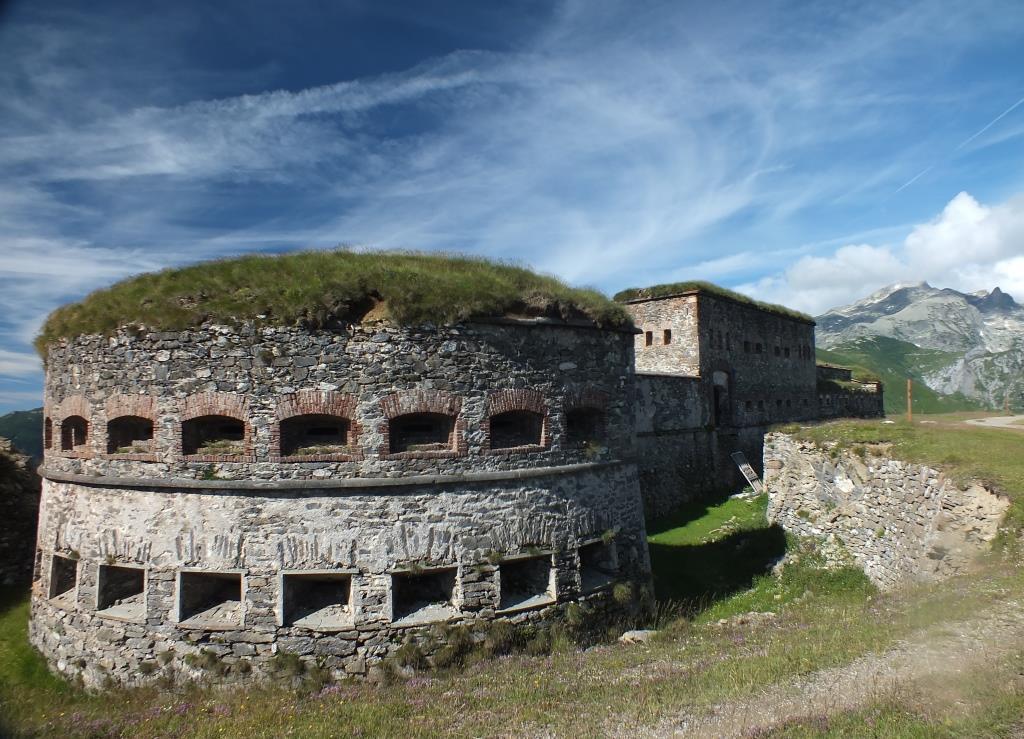Natural Communication at High Altitude
Basic information
Project Title
Full project title
Category
Project Description
I will research and settle with architectonic instruments the encounter of Architecture and Nature in the symphony that constitute the very peculiarity of the seven forts inhabiting the Col de Tende, between France an Italy. I will start to build a narrative of such a cosmic encounter between the forms of Nature and the forms of Man, documenting these XVIII war-ruins: after 150 years, these manufacts are now in a proportioned consonance with Nature, expressing a transnational European spirit.
Geographical Scope
Project Region
Urban or rural issues
Physical or other transformations
EU Programme or fund
Which funds
Description of the project
Summary
This project aims at studying, documenting and settling through small architectural interventions the peculiar co-belongingness that has been established between the forms of Nature and the forms of Humans in Col de Tende, 2’500 meters above the sea level, between the French and the Italian boarder.
In this strategic and historically often contested territory, six military fortresses were built after 1860 by the Italian state as a fortification line in the Italian/French war. Nowadays these fortresses are “back to Nature”.
According to the philosopher Michel Serres, communication happens because everything in the Universe (humans, animals, plants, rocks, planets,…) is able to store information and to send information. In this sense, Serres radically redefined the very core of human-nature relation, by assessing a total co-belongingness and a fundamental equality in the Universe between humans and non-humans. A new, epic unity defines the very meaning of “being”.
It is exactly in this constellation of thoughts that I intend to start this regional, transnational and “cosmic” project. The specific situation of the Col de Tende is of the most interesting kind for many reasons. Among others: the natural conditions on French/Italians Alps and their expanded landscape; the quasi-total absence of any kind of documentations -nor written, nor drawn- on these fortresses; the cultural heritage that such manufacts represent and their role in “structuring” the open-landscape; the importance to add knowledge through research and small architectural interventions in order to give back this territory to those communities that inhabit close by territories; the case-study this situation englobes as a potential pilot-project for many similar conditions.
To this regard, this project aims at creating conscious knowledge and potential use for such radical unity between nature in its wildest state and manufacts that, by losing their functionality, rebecame part of such a wilderness.
Key objectives for sustainability
Concerning this project, sustainable means above all something that is able to last in time; something that is not decadent; something that has such a great formal quality that is able to change functions without losing its scope; something the works in circle both towards past and future. This is the great lesson architecture and architectural thinking from the past still gives us nowadays and this is the golden rule this project wishes to put into practice.
If we think sustainability in this radical sense, the most sustainable act for architecture is to re-establish and implement artificial conditions that are already existing, to intervene on them with a strategic and cross-fertilisation thinking, to create links between natural and artificial systems that are already in communication, but not yet bridged.
From this kind of optics, sustainable is by definition circular and in this project it mainly means two things: first, to produce a civic and public knowledge about the exceptional “already there” that lays between the Maritime Alps environment and the six fortresses in the Col de Tende. We will do it through the means of architectural, geological and photographic surveys that can lead to public exhibitions. Second, to “silently” act on the existing manufacts and hiking infrastructure in order to link them in an overall unity that has the scale of a large territory. I aim to delicately implement the six fortresses and the trails that link them through small architectural interventions (as basic facilities, simple and “custom” adjustments of hike trails, process of securing existing structures and infrastructures,…). In this way, a large territory could again be perceived as “one thing” and experienced by people.
The very scope of this project is sustainable and circular: to bridge artificial and natural environment in a delicate manner, in a long-lasting scope that can be an exemplary action to engage with wild natural environment inhabited by humans.
Key objectives for aesthetics and quality
The key word for these research and interventions is recomposition.
By recomposition we mean the bigger scope of recomposing the unity of a territory as well physicals interventions we will do on certain parts of this territory in order to rebuild a certain coherency that inevitably got lost with time and decadency.
These acts of recomposition wants to address the issue of abandonment, a constant phenomenon in human history as a result of wars, climate change, economic vicissitudes or natural disasters. In this case, abandonment is due to the disappearance of mountain settlements geared to an Alpine economy. This project therefore offers a real alternative to numerous attempts in the recent past to redevelop and revitalize these realities as it will not act on a mere economical level. On the contrary, our aim is mostly aesthetic, ethical and “natural”: we aim at recomposing a certain unity in order to offer an experience of space related to a large territory as well to singular and objectual manufacts. Our interventions will be minimal and simple, we will “fix” what is already there, but that has not character anymore.
The project wants to offer a concise response to the specific need to give a new meaning to abandoned pastureland. It also satisfies the need for an appropriate epilogue to the life cycle of the fortresses and the civilization they represent. Factors such as simplicity, durability, participation, idealism, constancy and beauty guarantee the lasting value of these interventions, helping to strengthen the scenic appeal of the place and, above all, consolidating the resonance between the alpine open-landscape, the formal presence of these fortresses and the communities that inhabit these valleys.
Key objectives for inclusion
This project will firstly provide accessibility to and readability of a natural territory and its human signs, its historical heritage, its vernacular richness and the encounter of human and non-human natures. In this sense, connecting through small architectural interventions these post-war ruins will redefine a collective territory and a civic place at the scale of nature in which inclusion of the public will happen through the openness of landscape.
Main objectives will be:
-to connect communities within the natural expanded territory in which they live thorugh the revitalisation of manufacts that "strcutre" their territory
-to reharsh ruins through small collective and spontaneous interventions in order to rewrite, to archeologically bring back to surface, to recompose a writing of the landscape that can bring to human and natural co-belongigness
-to involve spontaneous interventions of recomposition from communities and localities
-to conceive the act of collective walkings as an aesthetic practice that can intervene on a territory
Physical or other transformations
Innovative character
Through the means of "recomposing" we will touch upon every of the three macro-subjects that should be at the core of a contemporary approach to architecture and to the territory: Sustainability, Aesthetics, Inclusion.
We intend these three to be in a mutual relationship one to the others: instead of three separated concepts, we will think them as a tripod able to sustain an architectural/landscape project of today. This generalist vision is of need if we really want to address the difficult and fundamental questions about reconnecting with Nature. If one of three subjects is missing, the other two will never be completed. They are not indipendent, they are extremely dipendent on each other.
In this sense, this project will be exemplary: on the one hand will resew nature (landscape) and humans (fortresses) through the beauty and the meaning of small and significant interventions spread out into a vast territory (the entire cultural landscape of the Col de Tende) with collective walkings and interventions.
We will act more as researchers that will provide people with instruments to act on their landscape in a trans-national spirit. Our interventions will be collective acts, small reconstructions and beauty oriented manufacts.




